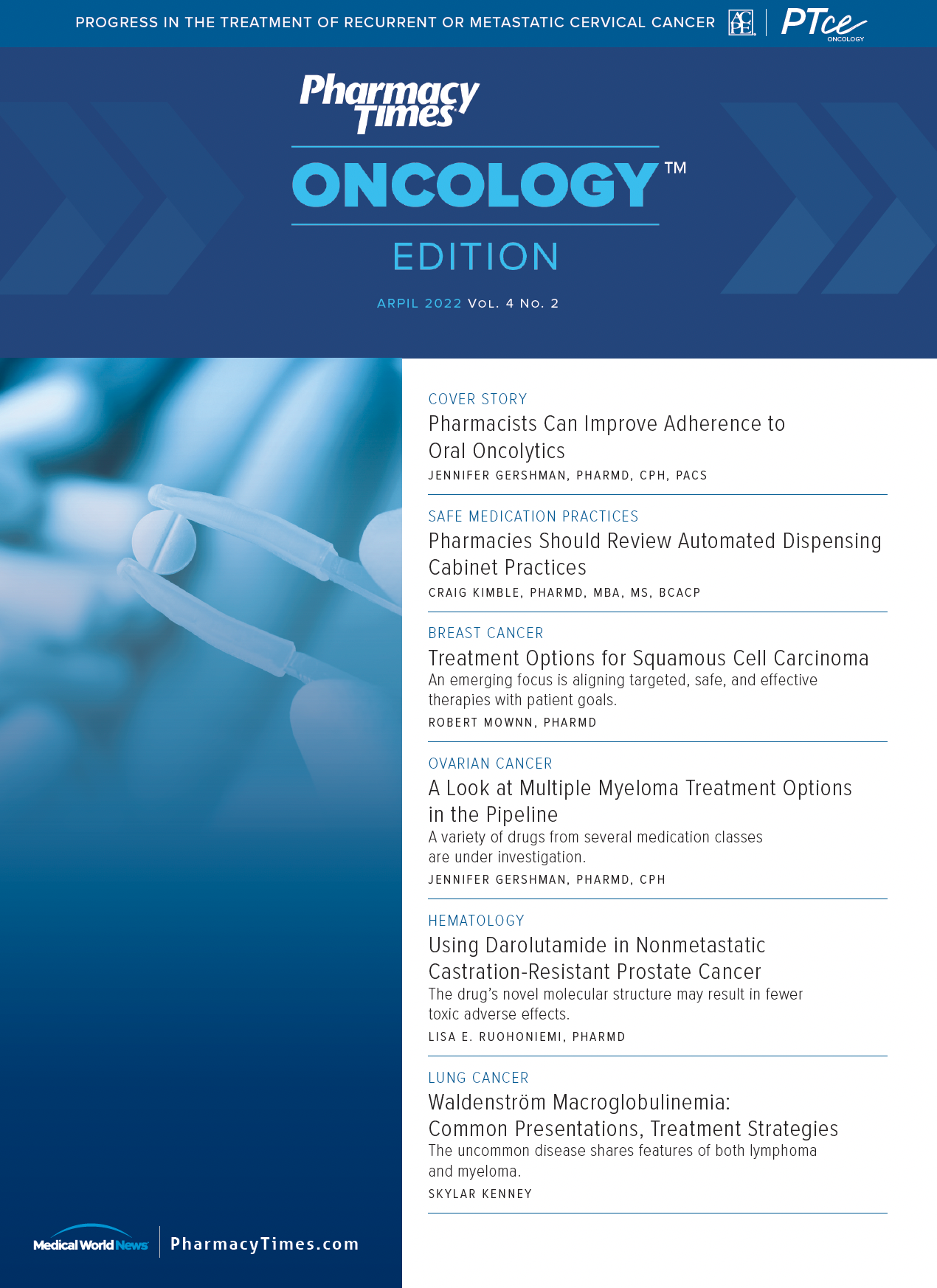Publication
Article
Pharmacy Practice in Focus: Oncology
Advancing Toward More Equitable Access to Oncology Care, Treatments
We see today far more clearly the impact of health care inequality, which can directly affect patient access to care, specifically oncologic care.
As the dust begins to settle, ever so slightly, from the chaos wreaked on society by the COVID-19 pandemic, there remain sparks of clarity that will persist as we move forward. Primarily, in the health care space, we see today far more clearly the impact of health care inequality, which can directly affect patient access to care, specifically oncologic care.
In the United States, individuals living in rural areas versus those living in urban centers will have a very different experience of the pursuit of oncologic care. Further, such health care disparities are amplified within specialty areas in oncology based on patients’ ability to access the best treatments at the best specialty treatment centers in the country, both financially and physically.
For example, in the treatment of adult sarcomas, Christy S. Harris, PharmD, BCOP, FHOPA, explained in a video interview with Pharmacy Times that her review of the literature showed that adults who stayed closer to home for treatment had a lower overall survival rate compared with patients who were able to be treated at a large, multidisciplinary sarcoma center.
In the interview, available on pharmacytimes.com, Harris explained that these data support National Comprehensive Cancer Network guidelines recommending that adult patients with sarcomas, regardless of grade, be referred to a large institution because of the improved outcomes possible from such a treatment opportunity. However, not all patients, if referred, can afford to make this journey for their health care, nor the accommodations such a trek would require.
In this month’s Pharmacy Times Oncology Edition™, we look at some issues that have arisen for patients in relation to obtaining and maintaining oncology care and treatments during the pandemic, whether concerning access to oncologic biosimilars or adherence to oral chemotherapy.
In our cover story, Jennifer Gershman, PharmD, CPh, PACS, discusses challenges patients face relating to adherence to oral oncolytics, as time to treatment initiation for patients with newly diagnosed cancer in the United States continues to increase. She provides an overview of some of the social determinants of health affecting this statistic and its subsequent impact on time to treatment initiation.
In another article, author Rachel K. Anderson, PharmD, CSP, addresses the rising need for oncology biosimilars, as these give patients access to oncology treatment at a potentially lower cost. Biosimilars also support adherence to oncology treatments due to the financial commitment being more attainable for more patients.







